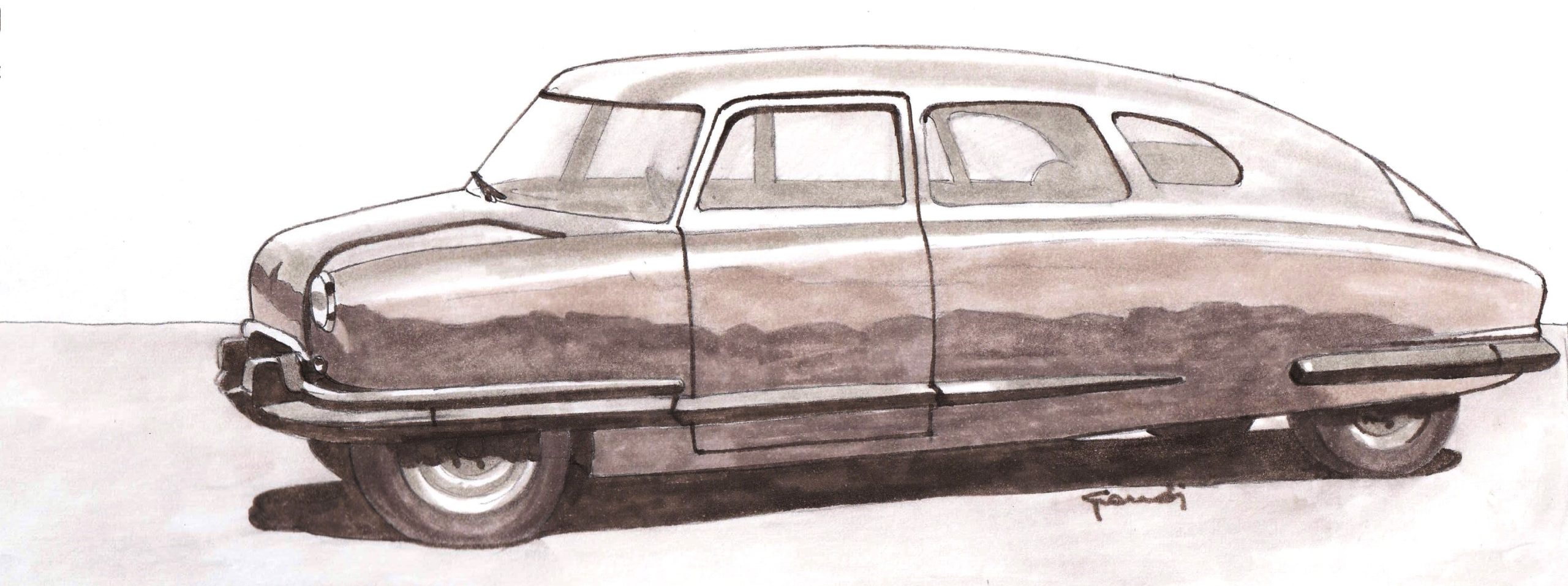“Simplify and Lighten”
With the valuable support of Prof. Massimo Grandi's depth of knowledge and illustrative talent
Photo credit: Some images are taken from the book Asi Service "Quando le disegnava il vento" by Massimo Grandi
In 1924, he got America’s first airliner, the Stout Ford Tri-Motor, off the ground. He was also the genius behind spectacularly innovative trains like the Railplane railroad car in 1933 and the legendary Union Pacific Speedster M 1000 in 1934.
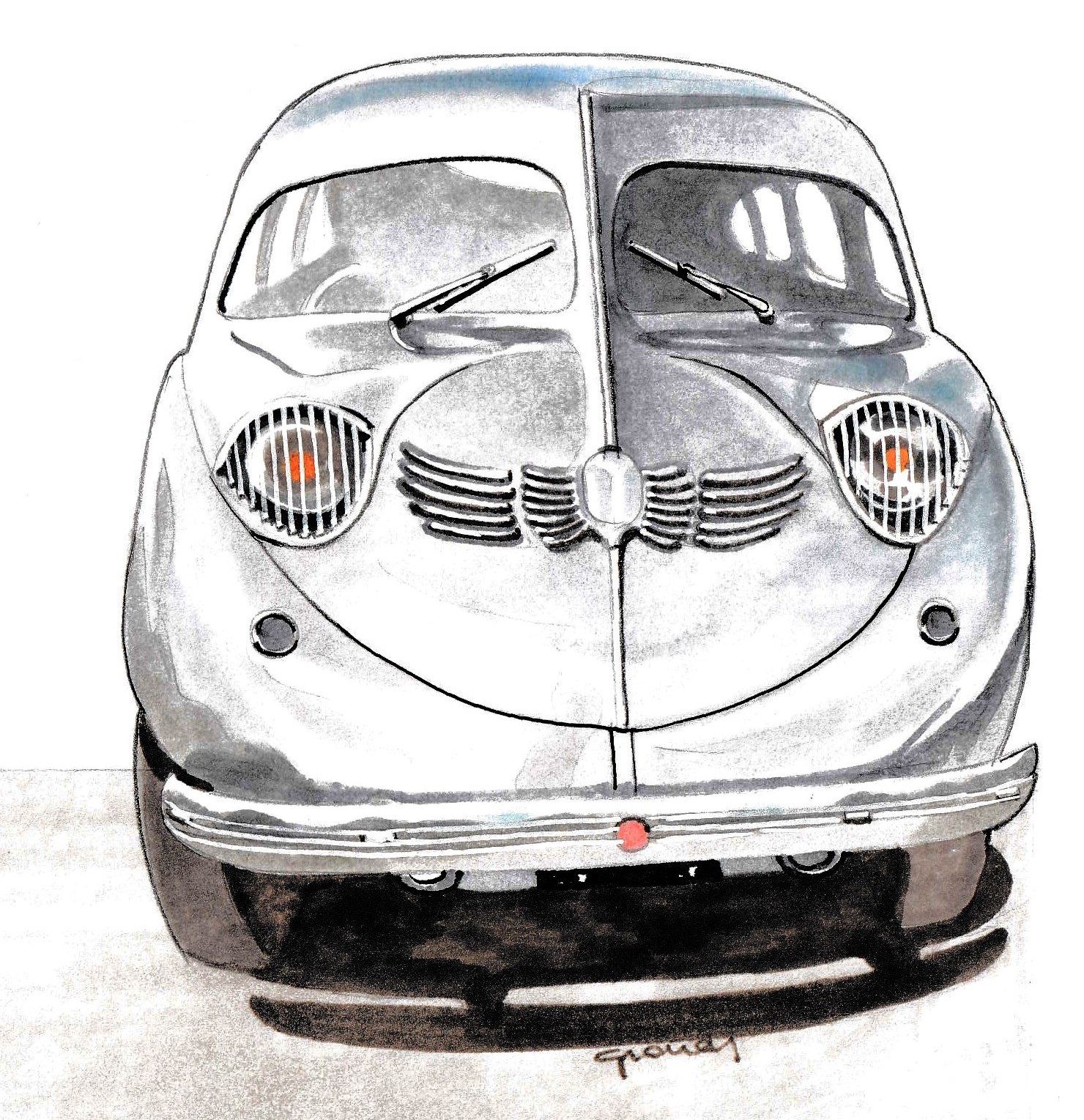
And the principle behind these achievements was the same one he applied throughout his working life: Simplify and Lighten. It was only after he turned his attention to automobiles, in 1936, that the renowned William B. Stout missed out on the pleasure of seeing his ideas transformed into reality.
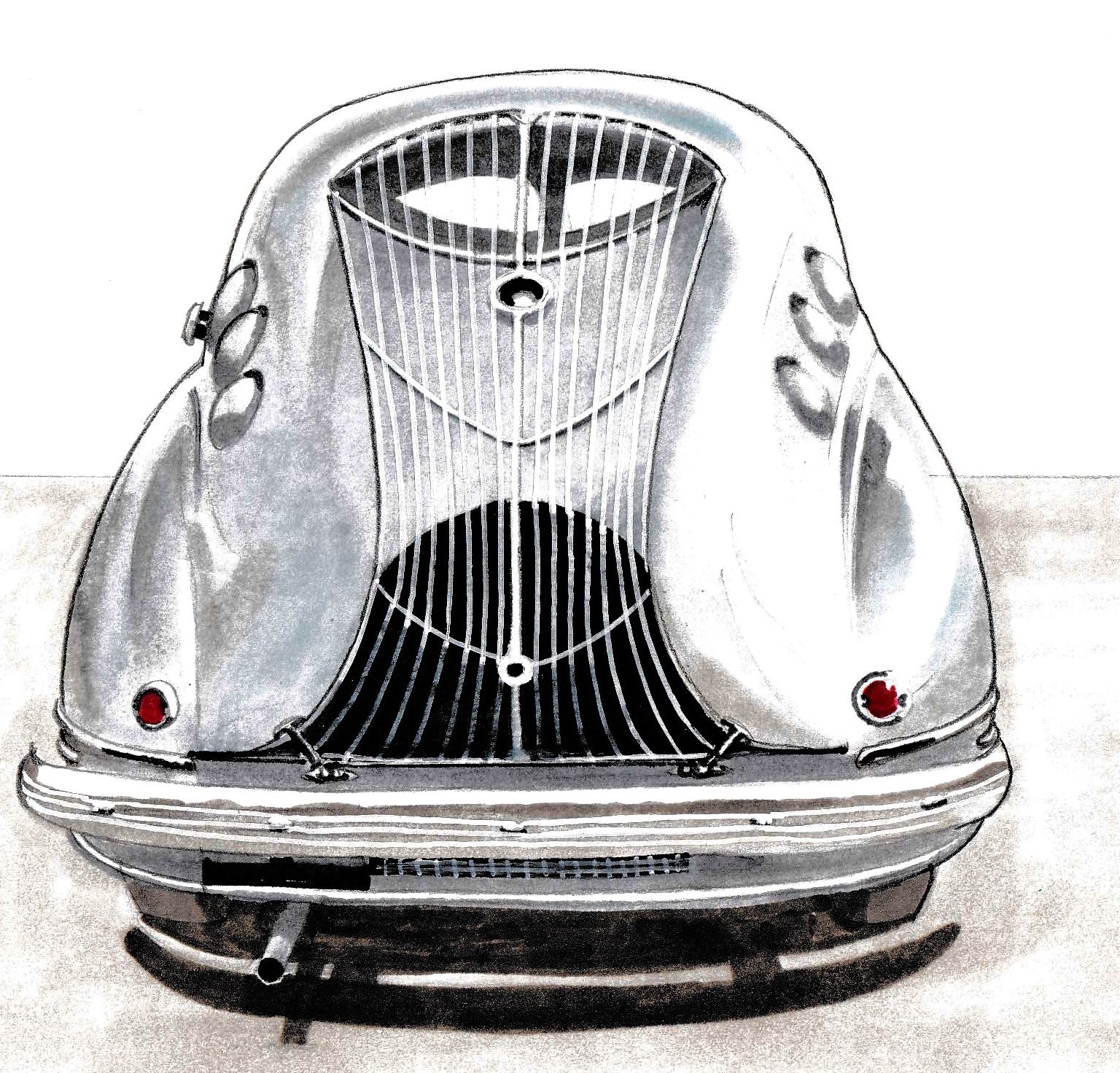
And yet the Scarab — it sported fake air intakes inspired by the image of an Egyptian scarab with spread wings — incorporated a series of truly avant-garde innovations: this simple minivan with its smooth lines had movable passenger seats that allowed it to be furnished in any way imaginable, even with a central table; it also had coil spring suspension and shock absorbers with high attachment points to avoid roll.
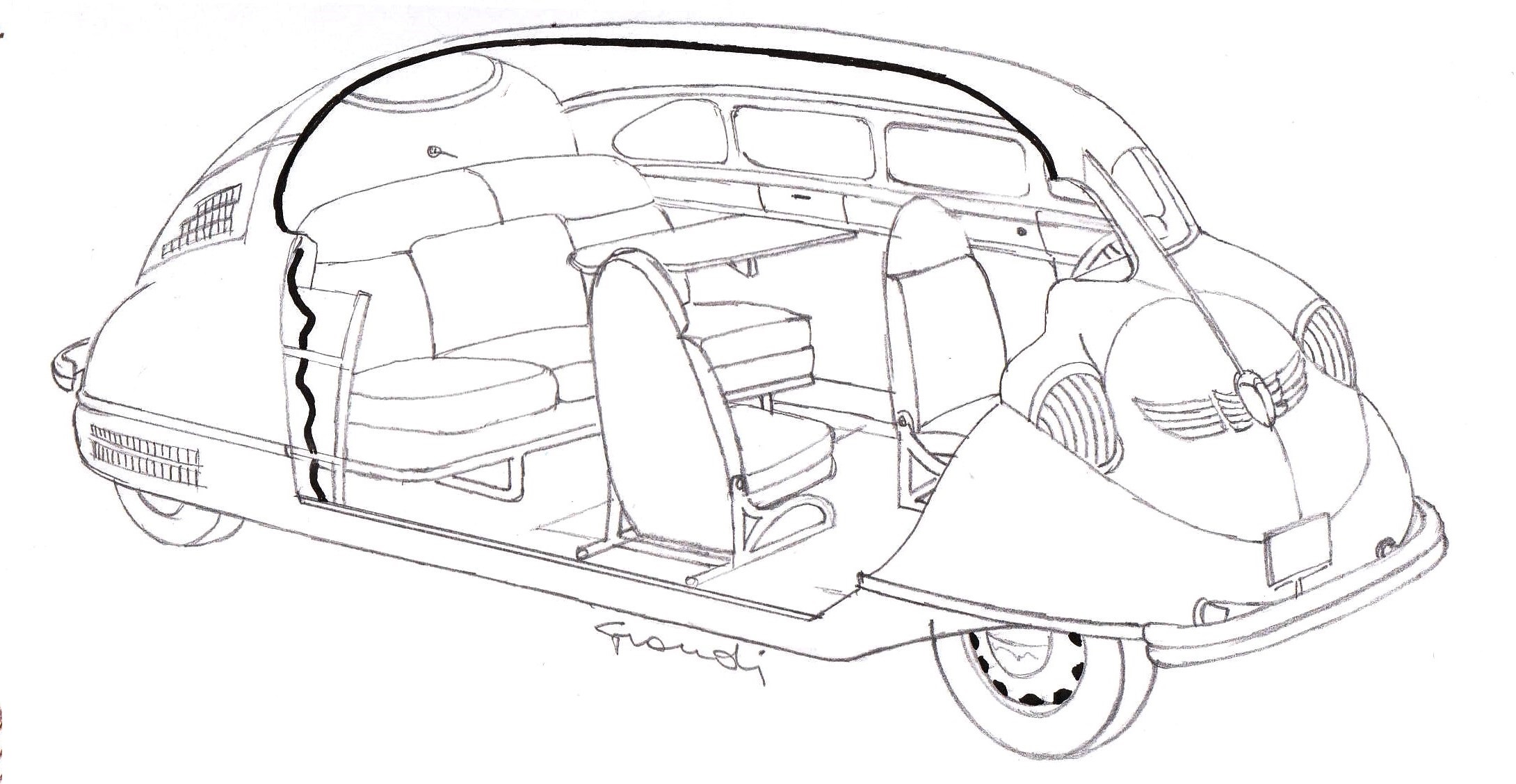
The aluminum body fixed over a framework of steel tubing guaranteed lightness, and the vehicle was powered by a generous rear-mounted Ford V8 engine. All this was combined with almost fanatical attention to detail and absolutely amazing body adornments, including elegant chrome grilles set in front of the headlights and a central longitudinal pillar that, creating a split windshield, gave the front a prow-like appearance. Six prototypes, all different, were produced from 1936 onwards. But then that was it.
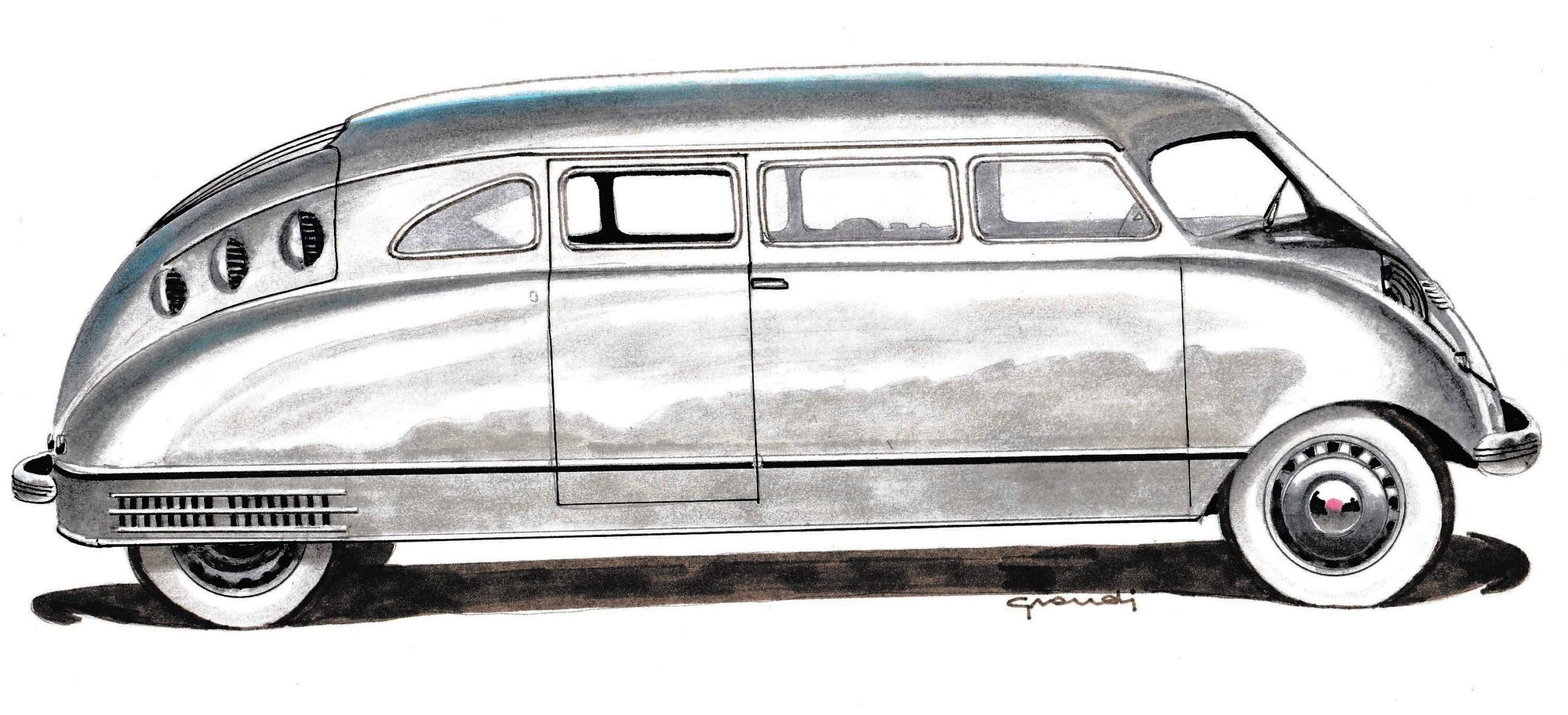
The final one, driven by hopes of a post-war recovery, was a two-volume version. This last Scarab, the Type III, had a fiberglass rather than aluminum body. But nothing came of it.
This whole idea of “Simplicity and Lightness” was ahead of its time. Today it would be viewed differently. But times have changed of course!
